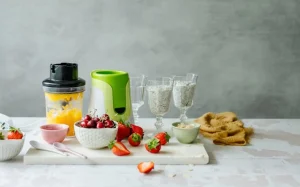If I had to title one appliance that really made my kitchen outstanding, it would be the ‘Blender.’ It’s one of those machines that can make ordinary ingredients into phenomenal meals, ranging from smooth, silky smoothies to creamy soups and nut butters.
But the truth is, running a blender is not as simple as just tossing things in and hitting “start.” What distinguishes a masterfully blended smoothie from a chunky disaster mess is at least partly about technique, timing, and proper gear.
That is why I have compiled this guide all in one—to allow you to know how to use a blender properly, choose the best one for your needs, and keep it in like-new shape for years.
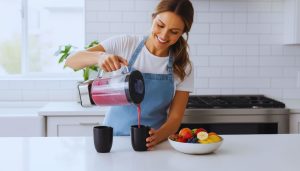
Here’s a quick overview of what I’ll cover in this post:
- The basics: How blenders actually work
- My expert guide to using a blender correctly
- A smart buying guide: what to look for before purchasing
- Top blender brands and my honest reviews
- Step-by-step cleaning and maintenance tips
- Essential blender accessories that make life easier
🌀 Understanding the Basics: What a Blender Does
Before we dive into usage, let’s start simple. A blender’s job is to mix, chop, purée, and emulsify ingredients using high-speed rotating blades.
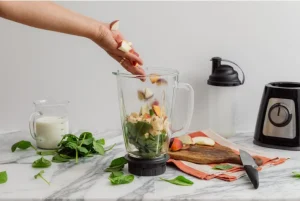
From morning smoothies to frozen desserts, a good blender can handle it all. However, not all blenders are equal. Some are perfect for light kitchen work, while others are built for heavy-duty blending.
So if your current blender sounds like a jet engine and still leaves spinach chunks behind — it might be time for an upgrade.
🧾 My Smart Buying Guide
I’ve owned (and burned out) enough blenders to know what really matters when shopping for one. Here’s my no-fluff checklist:
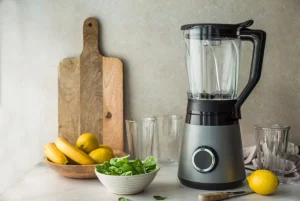
- Motor Power
Power defines performance. Anything below 500 watts is fine for soft fruits, but if you plan to crush ice or blend nuts, look for 1000 watts or higher.
- Jar Material
You’ll find glass, plastic, and stainless steel jars.
- Glass: Great for visibility, but heavy.
- Plastic: Lightweight but can scratch over time.
- Stainless steel: Durable and retains temperature well.
Personally, I prefer BPA-free Tritan plastic jars, which are durable and safe.
- Blade Design
Sharp stainless steel blades are essential. Avoid “fancy shapes” and focus on practical ones that cut evenly.
- Speed Settings
Variable speeds give you control. Pulse mode is a must for precise blending.
- Ease of Cleaning
If cleaning your blender feels like washing a car, it’s not the right one. Look for dishwasher-safe parts or easy self-cleaning features.
- Warranty and Support
Always check warranty terms. Top brands offer at least 2–5 years of coverage—and that says a lot about product quality.
⚖️ Brand Comparisons: Which Blender Fits Your Lifestyle
I’ve tested and reviewed some of the most popular blender brands on the market. Here’s how they compare in real-life use:
| Brand | Best For | Power Range | Key Highlight | My Verdict |
| Vitamix | Professional blending | 1200–1500W | High power, durable | Best for long-term investment |
| Ninja | Everyday home use | 1000–1400W | Multiple blades, affordable | Excellent balance of price & power |
| Breville | Smoothies & design lovers | 1000W | Sleek design, quiet motor | Stylish and efficient |
| NutriBullet | Personal blends | 600–900W | Compact and easy to clean | Ideal for small kitchens |
| Oster | Budget-friendly users | 700–1000W | Sturdy glass jar | Great for beginners |
🌟 My Recommended Blenders
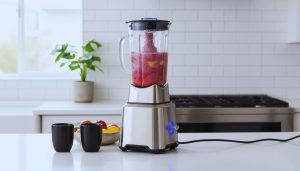
I’ve spent years testing blenders for power, durability, and ease of use. Here are my top picks that consistently perform:
- Vitamix 5200
This one’s a classic. It blends everything: soups, nut butters, and frozen fruits, like a dream.
✅ Why I recommend it: Durable motor, easy speed control, and long lifespan.
- Ninja Professional 1000
Great balance between price and power. Perfect for daily smoothies or crushing ice.
✅ Why I recommend it: Strong performance, affordable, and large capacity.
- Breville Super Q Blender
If you love quiet blending and modern design, this one’s a winner.
✅ Why I recommend it: Super quiet motor, smart interface, and preset modes.
- NutriBullet Pro 900
For single servings, this is unbeatable. Compact, quick, and efficient.
✅ Why I recommend it: Easy to use, easy to clean, and ideal for quick blends.
- Oster Pro 1200
Budget-friendly and dependable for beginners.
✅ Why I recommend it: Great power for its price, simple interface, and strong glass jar.
🧑🍳 Step-by-Step: How To Use a Blender Properly
Now let’s talk about the real part—using your blender the right way. Whether you’re making smoothies, soups, or sauces, these steps always apply.
Step 1: Set Up Your Blender
Place your blender on a flat, stable surface. Make sure the lid fits securely and the jar is properly locked into place.
Step 2: Add Ingredients in the Right Order
This is a game-changer. Always add liquids first, then soft ingredients, followed by frozen or solid items.
This helps prevent air pockets and ensures smooth blending.
Step 3: Choose the Right Speed
Start slow and gradually increase speed. Don’t go full power right away — it causes splashes and overworks the motor.
Step 4: Use the Pulse Option for Control
Pulse mode helps mix chunky ingredients evenly—perfect for salsa, soups, or dips.
Step 5: Avoid Overfilling
Fill up to two-thirds of the jar, max. Overfilling leads to spills (and regret).
Step 6: Blend Until Smooth
Blend for 30–60 seconds, depending on texture. Stop occasionally to scrape down sides for even results.
Step 7: Serve or Store
Pour immediately for a fresh taste. If storing, use airtight glass jars in the fridge.
🧽 How To Clean a Blender the Easy Way
Cleaning a blender doesn’t have to feel like a chore. Here’s my quick 2-minute method:
- Rinse Immediately: Don’t let ingredients dry on blades.
- Self-Clean Mode: Fill the jar halfway with warm water and a drop of dish soap.
- Blend for 30 seconds: Rinse again with clean water.
- Deep Clean Weekly: Use baking soda for stubborn stains or lingering smells.
Pro tip: Avoid immersing the motor base in water—wipe it with a damp cloth instead.
🧰 Must-Have Blender Accessories
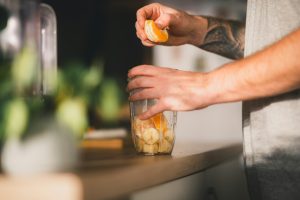
The right accessories make blending faster and cleaner. Here are my favorites:
Everyday Use
- Tamper tool: Helps push ingredients down safely.
- Silicone spatula: Scrapes every last drop (because who likes waste?).
- Reusable smoothie cups: Perfect for on-the-go mornings.
For Cleaning
- Blade brush: Keeps your blades spotless.
- Microfiber cloth: Gentle on plastic or glass jars.
Advanced Recipes
- Blending jar sets: Use smaller jars for sauces or dips.
- Travel lids: Convert blending cups into portable bottles.
🧼 Maintenance Tips to Keep Your Blender Running Smoothly
Blenders are an investment—treat them right, and they’ll serve you for years.
- Clean immediately after every use.
- Never overload with frozen or hard ingredients.
- Check blade sharpness every few months. Replace if dull.
- Avoid overheating. Let the motor rest between batches.
- Store with the lid off to prevent odors.
If your blender starts making an unusual noise, it’s time for a quick inspection—usually, a loose blade or worn gasket is the culprit.
⚡ Pro Tips for Better Blending
Here are a few tips I’ve learned from trial and error (and a few blender explosions):
- Chill ingredients first for smoother textures.
- Add ice last—prevents dull blades.
- Use frozen fruits instead of ice for creamier smoothies.
- Don’t blend hot liquids in non-heatproof jars — steam pressure can pop the lid!
- Upgrade your recipes—use your blender for soups, nut butters, even pancake batter.
💡 Common Mistakes to Avoid
Even pros make these errors sometimes—avoid them to extend your blender’s life.
- Running it empty (yes, that damages the motor).
- Using metal utensils inside the jar.
- Storing it without drying completely.
- Ignoring small leaks at the base—they grow worse over time.
🧠 Frequently Asked Questions (FAQ)
- What is the best blender for smoothies and everyday use?
If you’re looking for the best all-around blender, the Vitamix 5200 is my top pick. It’s powerful, durable, and blends everything from smoothies to nut butters with perfect consistency.
For a budget-friendly option, the Ninja Professional 1000 is excellent for daily use and performs far above its price range.
-
How do I use a blender properly?
Here’s the golden rule: liquids first, solids last. Add your ingredients in this order — liquids → soft items → frozen items → ice or solids. Start blending at a low speed, then gradually increase. This ensures smoother results and protects the motor.
-
Can I put hot liquids in my blender?
Only if your blender is heatproof (like some Vitamix or Breville models). Regular plastic jars may warp or cause pressure buildup from steam, which can pop the lid off. If you blend soups, always let them cool slightly and keep the lid vented.
-
Why does my blender smell burnt?
That’s usually a sign of motor overload or dull blades. Stop blending immediately and let it cool down for 10–15 minutes. If it happens often, reduce the amount of hard ingredients and check for worn-out gaskets or blades.
-
How long should a good blender last?
A high-quality blender can last 5–10 years, depending on maintenance. Always clean it right after use, avoid overfilling, and replace blades when they dull. Models from Vitamix, Breville, and Ninja are known for their long lifespan.
-
Is it worth buying an expensive blender?
Yes—if you use it often. High-end models like Vitamix or Breville Super Q offer better blending quality, stronger motors, and longer warranties. If you only blend occasionally, a mid-range Ninja or NutriBullet can easily meet your needs.
🛍️ Final Thoughts
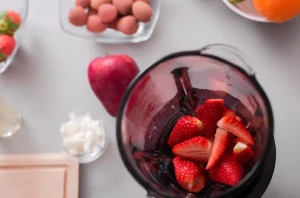
A blender is not just an appliance for your kitchen—it’s your new best friend for creating healthy, easy meals daily. With time spent mastering its use, you’ll discover how useful it can be.I always inform my friends: If your blender is not able to blend frozen bananas, then it’s time for a new one. So, whether you’re blending smoothies, soups, or secret sauce recipes, remember—technique, quality, and maintenance matter most. And if you enjoyed this guide, be sure to check out my kitchen appliance maintenance tips for even smarter hacks.
